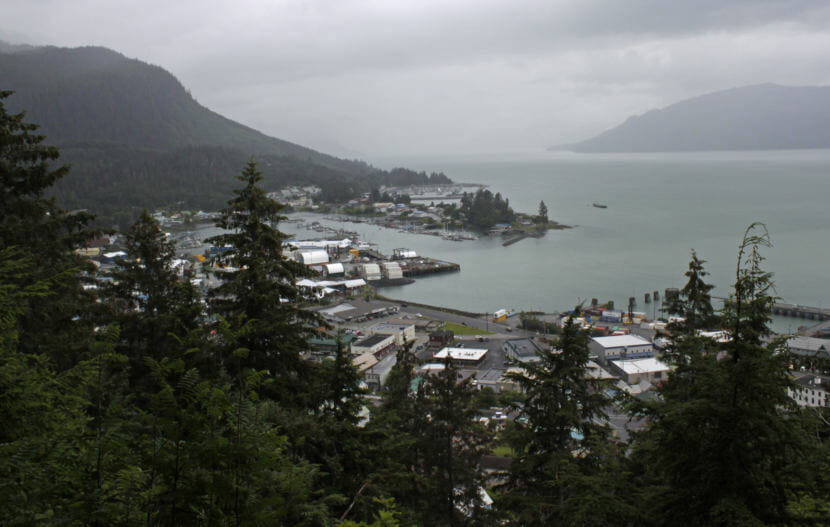
Wrangell’s upper dam leaks. That in itself isn’t a new development or even dangerous. But there were signs it might be getting worse. So the city hired engineers to check it out.
“At this time we don’t feel we have a high level of threat for a breach of the dam,” Amber Al-Haddad, the city’s Public Facilities Director, said.
Al-Haddad says the seepage wasn’t getting worse. And engineers cleared there were no signs of erosion or deterioration of the dam’s material.
But the city and state say there are definitely problems with the dam, which was built over timbers dating back to 1900.
“Because they’re so old, they had basically raised those dams on top of antique dams or defunct dams once a upon a time. And it’s the kind of thing you want to watch closely,” said Charlie Cobb, an engineer for Alaska’s Dam Safety Program. His department is familiar with Wrangell’s dams. And he says earthquakes pose the real risks.
“Right now we believe that they may not be stable under seismic conditions and that has cause for concern,” Cobb said.
One of the dams is likely to breach during a 7.4 magnitude earthquake, according to a 2006 U.S. Army Corps of Engineers study. Which is big, but not unprecedented for Southeast Alaska.
Cobb says Wrangell’s levies are among the worst in the state. Upgrading the dams would be expensive. And there is federal assistance available. Congress enacted the Water Infrastructure Improvements for the Nation (WIIN) Act in 2016. The Department of Homeland Security has $15 million for high hazard dams in its 2019 budget.
But federal programs are for dams across the nation. And Cobb says that makes them competitive.
“It would be relatively difficult for Wrangell to compete with such small amounts of money,” Cobb said. “Because they’re relatively small dams and there’s a relatively small population at risk, compared to large high hazard dams in other locals that could have significant populations at risk.”
That’s not to say there isn’t any risk to people and property. If one or both of the reservoir dams failed, it could hit City Park and flood homes including, one of the trailer parks. Together, the dams are holding back around 70 million gallons of the community’s drinking water.
Cobb said the feds put priority on disasters after they happen. There isn’t enough for preventative medicine.
“Oftentimes there will be money in emergency responses, but there has to be a natural disaster, or some of disaster before that money’s loosened up,” Cobb said. “Unfortunately, they don’t provide money to prevent a disaster from happening to begin with. It’s a quirk of the system.”
The city knows this funding struggle. So for now, it’s updating its Emergency Action Plan for the dam system. It would outline what the city needs to do in case of catastrophic failure — and the flooding that would follow.
And federal funds? The city is applying. In the meantime, it’s doing a survey to figure out which areas would be hard hit if the unthinkable were to happen.




